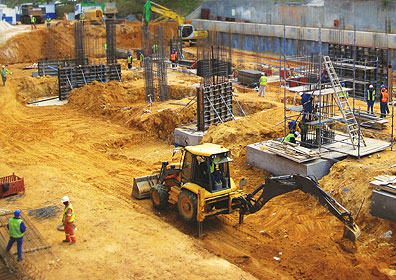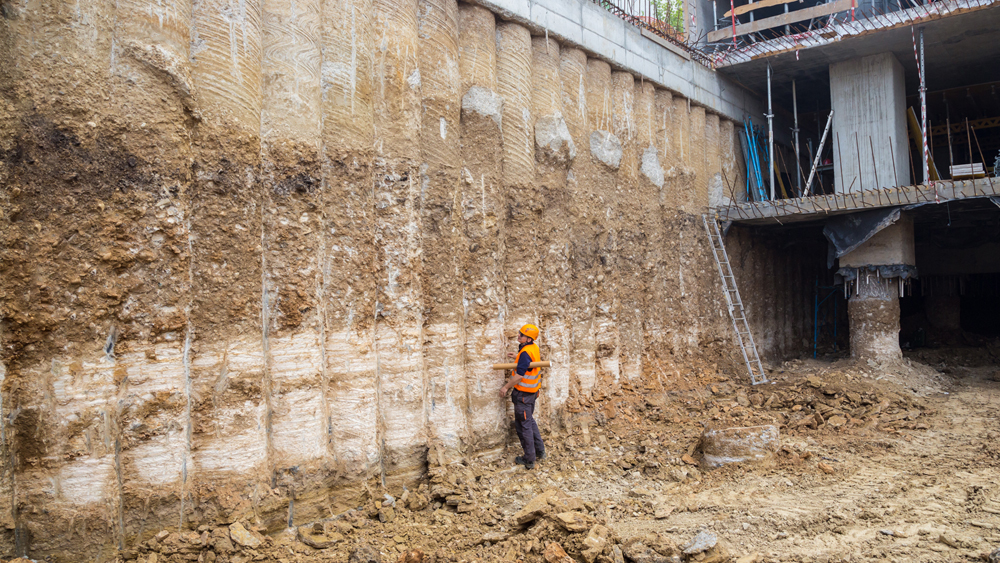Specialized Geotechnical Works for Lasting Building And Construction Solutions
Specialized Geotechnical Works for Lasting Building And Construction Solutions
Blog Article
An In-depth Evaluation of the Providers Supplied by Consulting Engineers in the Area of Geotechnical Engineering: From Site Examination to Project Application
Consulting engineers in geotechnical design play a pivotal function in the successful implementation of construction jobs, starting with extensive website investigations that disclose crucial subsurface problems. Their competence extends to soil residential or commercial property analyses, environmental effect analyses, and the careful tracking of task implementation, making sure placement with safety and sustainability requirements. Each stage is interlinked, presenting special obstacles and considerations that can substantially affect project results. As we discover these essential services, it ends up being obvious that recognizing their implications is important for reliable task management and danger reduction. What details exist within each of these stages that demand our interest?
Significance of Geotechnical Design
Geotechnical design is a critical technique that underpins the safety and security and sustainability of civil facilities jobs. By understanding the mechanical behavior of soil and rock products, geotechnical engineers evaluate the viability of websites for different building and constructions, including structures, bridges, and dams. This basic analysis guarantees that frameworks can hold up against environmental aspects and loads without experiencing failure.
The significance of geotechnical engineering extends beyond plain architectural safety; it additionally includes environmental stewardship. Correct geotechnical evaluations contribute to decreasing the environmental impact of building and construction. With careful analysis of soil residential properties and groundwater conditions, designers can develop structures and maintaining structures that alleviate risks such as disintegration and landslides, promoting long-lasting stability.
Additionally, geotechnical engineering plays an essential role in task cost monitoring. geotechnical works. By identifying prospective issues early in the style stage, engineers can advise suitable options, thus preventing pricey delays and redesigns throughout construction. This aggressive technique not only boosts project effectiveness but likewise significantly minimizes threats connected with unforeseen site problems
Website Investigation Methods
Efficient website investigation methods are crucial for gathering accurate data regarding subsurface problems before construction. These techniques help with the understanding of the geological and hydrological setting, which is essential for guaranteeing the stability and security of suggested frameworks.
Usual approaches used in website investigations include borehole drilling, which enables engineers to draw out soil samples at different midsts, giving understandings right into stratification and product kinds. In enhancement, geophysical studies, such as seismic refraction and electric resistivity, deal non-invasive methods to assess subsurface qualities over larger areas. These methods can help identify anomalies without comprehensive excavation.
Test pits are an additional useful method, offering direct observation of dirt layers and making it possible for in-situ screening. geotechnical works. This method is specifically helpful for shallow excavations and can aid analyze groundwater levels. In addition, cone infiltration examinations (CPT) are increasingly made use of, as they give constant profiles of dirt resistance, which assists in identifying dirt stamina and layering.
Each of these techniques plays an essential function in developing a comprehensive understanding of website conditions, making it possible for consulting designers to make informed choices and suggestions throughout the project lifecycle. Exact data collection throughout the site examination phase is pivotal to mitigating dangers and ensuring effective project execution.
Soil Home Analysis

The assessment process usually includes a mix of research laboratory tests and field investigations. Key residential properties such as shear toughness, compressibility, leaks in the structure, and moisture content are evaluated to identify the soil's viability for building special info functions. Typical examinations, consisting of the Atterberg restrictions, Proctor compaction, and triaxial shear examinations, are generally used to collect information on dirt habits.
In enhancement to these examinations, in-situ techniques such as the Requirement Penetration Test (SPT) and Cone Penetration Test (CPT) offer valuable understandings right into dirt stratigraphy and thickness. The results of these evaluations inform engineers concerning possible obstacles, such as soil liquefaction or settlement, enabling them to design ideal reduction methods.
Environmental Effect Assessment
Environmental influence examination plays a vital function in the planning and implementation of design jobs, specifically in geotechnical engineering. This process includes analyzing the possible environmental consequences of suggested tasks on dirt, water, air high quality, and surrounding ecosystems. Consulting designers use various techniques, including site evaluations, modeling, and field research studies, to recognize and quantify these influences.
The examination usually begins with the recognition of baseline ecological conditions, which acts as a reference for forecasting potential adjustments. Engineers assess elements such as disintegration, groundwater contamination, and habitat disturbance, guaranteeing that all pertinent environmental laws and guidelines are stuck to throughout the project lifecycle. Stakeholder interaction is additionally an essential component of the assessment procedure, as it fosters communication in between project designers, neighborhood communities, and regulative bodies.
In addition, mitigation methods are created to address determined influences, allowing engineers to suggest choices or modifications to forecast styles that boost sustainability. This proactive method not just decreases adverse effects on the atmosphere yet additionally promotes public count on and compliance with ecological regulation. Inevitably, effective environmental impact assessment reinforces the total honesty and viability of geotechnical engineering projects, supporting responsible advancement techniques.
Job Application and Tracking

Surveillance is a vital element of project execution. Engineers make use of different techniques, such as instrumentation and area tests, to examine soil habits and structural actions in real-time. This constant monitoring makes it possible for the recognition of any inconsistencies from expected efficiency, enabling prompt treatments to reduce threats.
Additionally, getting in touch with engineers keep open communication with specialists and stakeholders throughout the process. Regular website assessments and progress reports ensure that all parties are notified about task status and any type of arising worries. By fostering partnership and openness, getting in touch with engineers promote a more efficient application process, therefore boosting project outcomes.
Eventually, efficient job execution and surveillance not just copyright safety and quality standards however likewise add to the general success of geotechnical jobs, guaranteeing they satisfy their designated objectives sustainably and sensibly.

Final Thought
In verdict, the role of seeking advice from engineers in geotechnical design encompasses an important sequence of services that make certain job success. Inevitably, the multifaceted payments of consulting engineers are crucial in dealing with the intricacies of geotechnical challenges in contemporary design projects.
Report this page